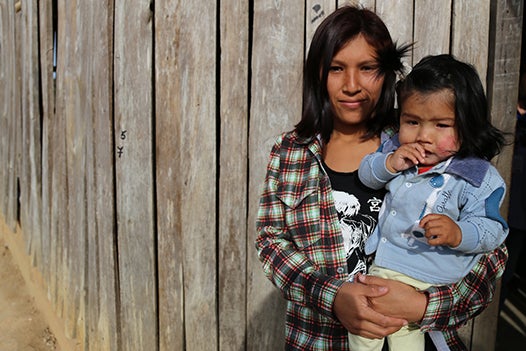
Basically, any general statement you use to describe Brazil can be countered with a ‘but…’. The vast internal diversity in the country calls for nuanced statements. When it comes to the status of gender equality in Brazil, there are several layers of ‘but’.
Brazil has come a long way towards gender equality.
Not only is there a commitment to promote gender equality as evidenced by the creation of specialized institutions and the strengthening of the legal framework on gender-based violence (GBV) – also, certain gaps in development outcomes are closing. For example, the gender gap in education has closed and basically all men and women can read and write. Substantial improvements have also been made in maternal health, with nearly all births (98 percent) attended by skilled personnel, compared to 88 percent in the mid-1990s.
Great news , but…
Brazilian women are not experiencing progress in all areas of life. Women’s economic opportunities is an area where much is still to be done. Over the past decade, gender gaps in labor force participation have changed very little. In fact, since 2005 women’s participation in the labor market has only increased with one (!) percentage point. Moreover, women spend four times as much time as men on unpaid domestic tasks every week. Another area that remains a challenge is women’s voice and agency. For instance, women in Brazil are extremely under-represented in politics: less than one out of ten members of parliament is a woman. Even more concerning is the fact that two in five Brazilian women have experienced emotional, physical or sexual violence by a man at some point in their lives.
And there is yet another layer of ‘but’ that we cannot neglect if we want to effectively address gender inequality in the country.
As a young, poor, black woman from an informal settlement in Recife, Northeast Brazil, pointed out when talking about opportunities for youth in Brazil: ‘You see, if things are already complicated – imagine for someone like me.’
This is the essence of the recent Gender Diagnostic: A Snapshot of Gender in Brazil Today: Institutions, Outcomes, and a Closer Look at Racial and Geographic Differences . Race and location can be fundamental game changers. Not all women are equal and suffer from the same disadvantages. Certain groups of women are still much worse off than others in those areas where progress overall is stagnant and challenges persist.
When it comes to education for instance, white women report 9.1 years of education on average – compared to 7.7 for those who self-identify as black or parda (Afro-Brazilian). Similarly, maternal mortality ranges from 37 deaths per 100,000 live births in Santa Catarina (South) to 102 deaths in Piauí (Northeast) (World Development Indicators, 2013). Also, among economically active adults who completed secondary education or higher, Afro-Brazilian women earn an average of 15.6 BRL or less than half of the wage of white men with the same level of education, 32.7 BRL (2012).
Homicide is another example of how race and place of residence can be directly linked to a heightened risk: Afro-Brazilian women in the Center-West region face a homicide rate of 8 per 100,000. In contrast, the homicide rate for white women is only half as high in those states and as low as 2 per 100,000 in the Northeast.
So what can we do about this?
Promoting gender equality is important in its own right – and is of instrumental value to development, to poverty and inequality reduction. Brazil has been applauded internationally for all its effort in promoting gender equality in the past 10 years. Rightly so.
But, it will not be possible to achieve equality in Brazil if we do not take it on in a nuanced way: Tackling racial and geographic inequalities is critical for the design of policies and projects. If we do not target and tailor the efforts, these will not be effective, and Afro-Brazilian women and those living in the northern parts of the country may be systematically left behind: They may continue to have less access to education and health services, to die at higher rates from pregnancy related issues, to have fewer and worse jobs, and to be more exposed to (deadly) violence than their white peers in the South and Southeast regions.
This is not only wrong. It is also a huge obstacle to Brazil’s development overall and thus needs to be addressed urgently.


Join the Conversation